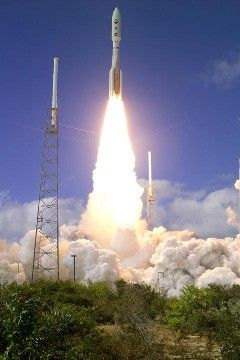New Horizons - Ralph/Linear Etalon Imaging Spectral Array (LEISA)
On January 19, 2006, the New Horizons spacecraft lifted off from the Kennedy Space Center aboard an Atlas V launch vehicle. New Horizons quickly became the fastest spacecraft to reach the moon as it headed out into the solar system on its journey to Pluto and then beyond to the Kuiper Belt. On Feb. 28, 2007, New Horizons had a close flyby of Jupiter, using the giant planet for a gravity assist. Personnel in Goddard's Planetary Systems Laboratory were involved in the planning and analysis of science observations of Jupiter using the New Horizons cameras, and also the Hubble Space Telescope and NASA's IRTF, in support of the flyby. More recently, New Horizons passed Saturn's orbit on June 8, 2008 (too distant for a gravity assist or observations) and is now en route to a Pluto encounter in July 2015.
Drs. Donald Jennings and Dennis Reuter, of Goddard's Planetary Systems Laboratory, serve as Principal Investigators with New Horizon's Linear Etalon Imaging Spectral Array (LEISA) instrument.
This web site has more information.

